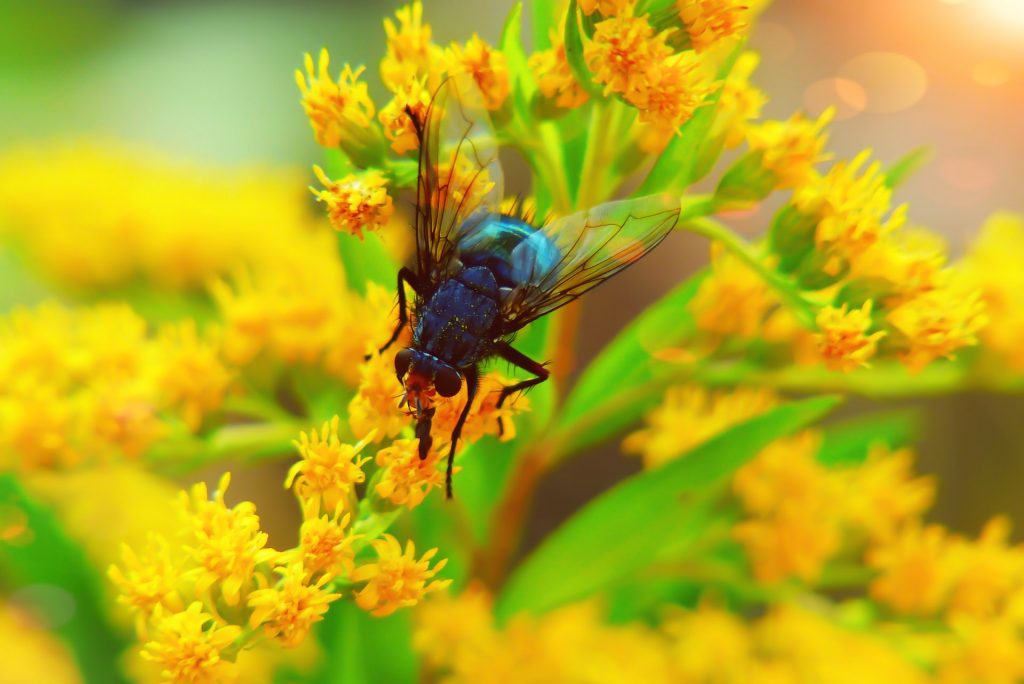Have a green thumb and want to learn more about how pollination works?
Leading Australian producer and retailer of 100% Australian honey, Beechworth Honey breaks down all you need to know about sustaining a bee-friendly garden.
In Australia there are 12,400 registered beekeepers that manage about 528,000 beehives. Of these hives, over 70% are operated by commercial beekeepers with more than 200 hives. Most commercial apiarists operate between 400 to 800 hives and some have more than 3000.
On average, the Australian honey bee industry produces between 20,000 and 30,000 tonnes of honey annually with about 5,000 tonnes exported to destinations such as Singapore, Malaysia, United Arab Emirates, China and Hong Kong.
The beekeeping industry is worth an estimated $98 million and provides a range of value to Australia’s agriculture sector and the economy in general through regular pollination services as well as honey and honey products for medical uses.
Learn more about the important relationship your garden has with bees:

How plants attract bees
While honeybees (Apis mellifera) might be the best known of the bee species there are thousands of different bees. In Australia alone there are over 2000 native bee species and most of them are solitary bees. Some live in trees, others in the ground and some in colonies.
- The colour of the flower
Regardless of the bee species, there are common floral traits that attract most bees. White, yellow, purple or blue are colours that attract bees. Flowers that bees love exude a pleasant but mild aroma. It turns out that all bees search for flowers that produce nectar, pollen or both.
2. Ultraviolet (UV) marks
Bees and other pollinating insects see things that we don’t see. They can perceive ultraviolet (UV) light. If you look closely at some flowers they have dots and spots that absorb UV light and act like runway lights to guide the insect into where the plant has positioned the nectar.
Some insects can only navigate to flowers with UV markers. However for bees: white, yellow, purple or blue flowers are signal enough that pollen and nectar exist.
Pollination isn’t just for bees

1. Flies
Flies are pollinators. They are often seen on the same flowers as bees as they, too, are attracted to both pollen and nectar. Hoverflies can be particularly mesmerizing as they dart about the flowers alongside their fatter, hairier bee colleagues.
2. Beetles
Some flowers have evolved to attract beetles as their preferred species. These “beetle buddy” plants tend to have flowers that are flattened like dinner plates. They are often green or murky white but never brightly coloured. If they have an odour that is fruity with hints of decay, chances are that beatles love them.
3. Moths
Moths can also be excellent pollinators but we often don’t see them on flowers. Their pollination magic happens at night. Moths are usually nocturnal and have co-evolved with plants that flower during the night. Typically moths go for white, red, purple or pink flowers.

4. Butterflies
The showiest of all the pollinators is the butterfly. They are lured by colourful flowers with beautiful contrasting nectar guides. Butterflies are not interested in pollen and they love showy red or purple flowers.
5. Bats
Bats are very clever pollinators. The flowers they search for come out at night and maybe green, purple or white and loaded with pollen and nectar. Their flowers are positioned outside the foliage zone to make landing for the bats easier in the dark.
6. Birds
Birds such as honeyeaters are specifically attracted to various plants whose beaks reach deep down in the flower to the nectar reserves to collect their meal. They too are efficient pollinators. Large red, orange and white flowers bloom on plants with strong stems to hold the weight of the birds.

The most important tip to planting an effective pollinator garden
Growing an array of different flowering plants with a full spectrum of flower colours is essential for providing a rich diet for all species that live in the garden.
Plants and pollinators coexist beautifully in nature. Planting a bee-friendly garden that supports pollinators is joyful and very rewarding. Not only will your garden be full of colour, but it will also be full of bees, birds and butterflies.
For more information on Australian honey and a number of great honey infused recipes, visit the Beechworth Honey blog.







































Add comment